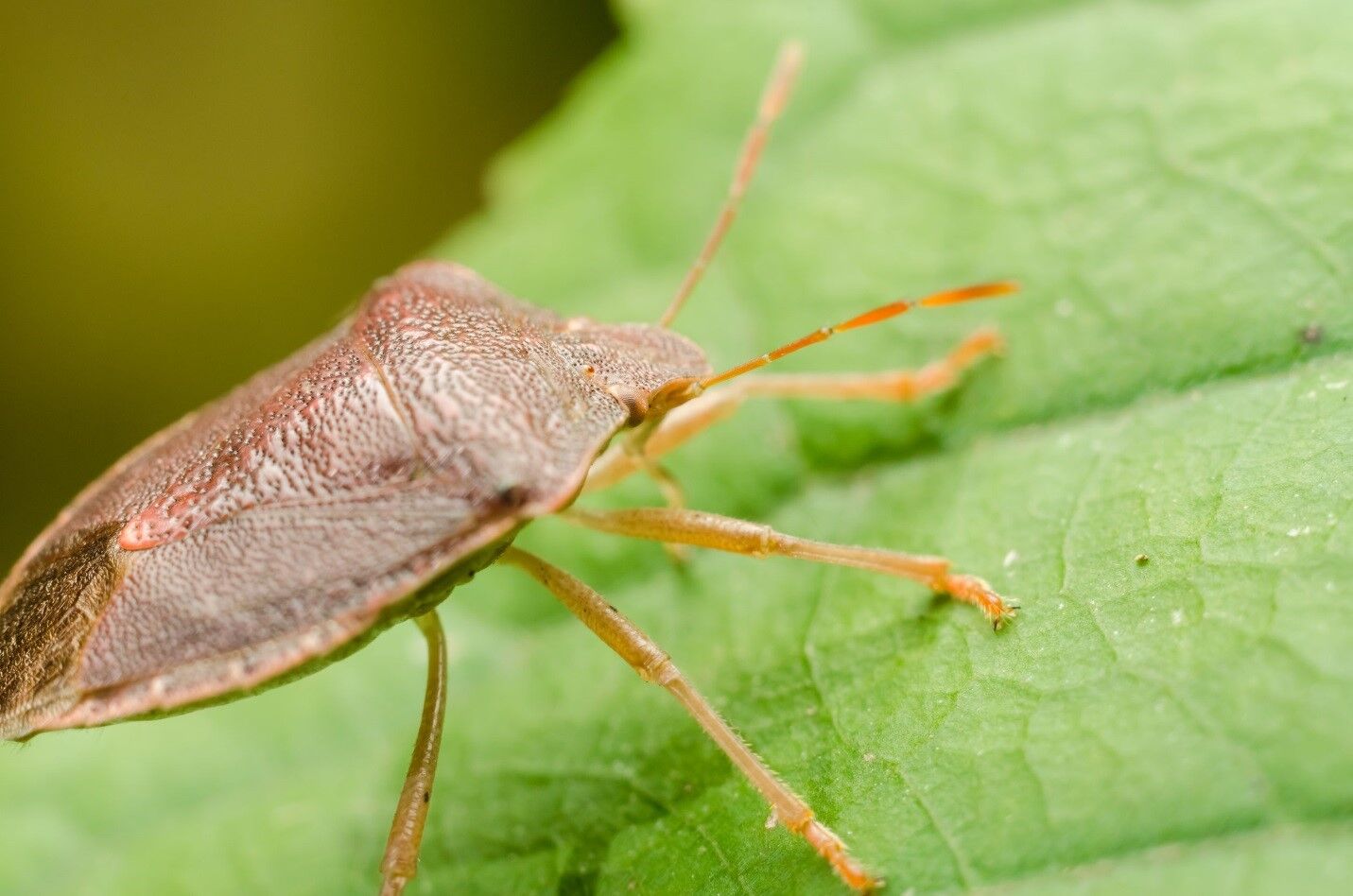It’s Stink Bug Season and You Should Care about It

They’ve become as sure a sign of spring’s arrival as the chirping of the birds and the blossoming of trees. The Brown Marmorated Stink Bug (BMSB) has only been on the continent for a couple of decades, but has managed to hitch rides in nearly all US states and Canadian provinces.
The first official detection of the bug in Canada came in 2012, when a homeowner in Hamilton found one on his property. Since then, the presence of the invasive species has been confirmed in Toronto, Vaughan, London, Ontario, Fort Erie, Ottawa, Windsor, and several other provinces. US authorities have confirmed the stink bug’s presence in 36 states and the District of Columbia, posing serious agricultural threats in six states (Pennsylvania, West Virginia, New Jersey, Delaware, Washington, D.C., and Virginia), and nuisance problems in thirteen others (Washington, Oregon, California, Kentucky, Indiana, Michigan, Tennessee, North Carolina, Ohio, New York, and several others).
Researchers from the North Dakota State University have identified 4,700 species of stink bugs in the world, with approximately 250 living in Canada and the U.S. The insect gets its name from the brown marbling pattern visible on its back and the unpleasant odor they produce when threatened.
Causing Significant Damage to Farmers and Gardeners
BMSBs get to new areas primarily by hitchhiking rides on vehicles along transportation corridors, on shipments of products, and on motorhomes returning from visiting infested areas. Some natural spread does take place from established areas.
While the 18-millimetre long bugs that smell like rotten coriander when threatened or crushed cause no structural damage to buildings and pose no physical risk to humans and pets, they are a major concern to the agricultural industry. BMSB has a wide range of hosts that includes primarily agricultural crops such as tree fruit, grapes, nuts, tomatoes, sweet corn, soybeans, grain crops, and ornamentals. However, they will also feed on many trees and shrubs typically found in landscaped areas, developing large colonies in unmanaged areas.
According to a 2010 report from the U.S. Apple Association, Mid-Atlantic apple growers have lost a total of $37 million in income in a single year, while farmers from Virginia, Delaware, New Jersey, and other states reported significant losses of crops such as apricots, Asian pears, nectarines and peaches, lima beans, peppers, and tomatoes. Specifically, the bugs damage fruit, vegetable, and nuts by deforming fruit, stippling leaves, piercing plant stems, killing buds, staining seeds, causing necrosis, and delaying maturity.
In Ontario, the stink bug isn’t considered a serious issue yet. However, in an interview by Global News Canada, the program lead with the Ministry of Agriculture Hannah Fraser declared that, “Those [referring to the tree fruit, grapes, sweet corn, etc., crops affected by the brown marmorated stink bug] crops are valued at over $450 million at the farm gate. So there’s a big potential loss to growers from direct damage of the pest.” She noted that even the slightest damage on Ontario crops could render them unsellable, resulting in significant financial loss for local farmers.
For homeowners, stink bugs start to become a problem in early spring, as they wake up from their dormant state in March and April, and in early September, when they aggregate in large numbers to find a warm place to spend the winter. Once they manage to get inside the house in the autumn, they usually head for the attic, where they settle in piles of clothes or stacks of papers. They may not feed on materials and they may not bite, but they may become quite a nuisance due to their incredibly nasty odor and the high diversity of hiding places: inside bookcases, under sofas and beds, behind baseboards, in window and door trim, and inside attics. Once they manage to get inside your house, your chances of driving them out are incredibly slim.
Effective Control Methods
Prevention is key if you want to keep the brown marmorated stink bug from establishing residence inside your house. Pest control professionals encourage homeowners to follow these simple prevention tips:
- Exclusion:
- Caulk windows inside and out
- Install weather stripping around doors and windows
- Secure crawlspace entries
- Screen vents and the top of the chimney to keep out pests
- Sanitation:
- Use clean stock and ensure proper weed control
- Dispose of culls and plant debris properly
- Rake away edible vegetation from your house’s foundation
- Repair broken screens and windows
- Monitoring:
- Check spring and fall host plants
- In fall, watch for bugs congregating in large numbers, preparing for winter
- Check common overwintering sites, such as the attic, under tree bark, standing dead trees, etc.
Both live and dead marmorated stink bugs can be completely removed from your house and garden with the assistance of a pest control exterminator in Toronto, who knows how to identify congregation sites and can use registered and safe products to eliminate existing populations. Call one today and make the first step towards solving your stinky bug problem!
About the Author
Daniel Mackie, co-owner of Greenleaf Pest Control, is a Toronto pest control expert well-known as an industry go-to guy, an innovator of safe, effective pest control solutions, and is a regular guest on HGTV. Mackie, along with business partner Sandy Costa, were the first residential pest control professionals in Canada to use detection dogs and thermal remediation for the successful eradication of bed bugs. In his free time, he is an avid gardener.



You must be logged in to post a comment.